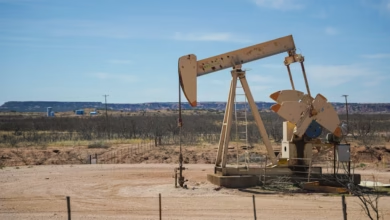Navigating Oil Transportation: Pipelines, Tankers, and Innovative Methods Shaping the Global Oil Trade

Oil transportation is a critical component of the global energy landscape, facilitating the movement of crude oil from extraction sites to refineries and ultimately to consumers. As the demand for oil continues to fluctuate due to geopolitical tensions, market trends, and environmental concerns, understanding the various methods of oil transportation—such as pipelines and tankers—becomes increasingly important. This article delves into the intricacies of oil transportation, exploring the essential roles that these infrastructures play in the global oil trade and their influence on oil prices and OPEC's strategies. Additionally, we will examine the environmental impact of oil transportation methods and the innovations emerging to enhance energy security while promoting sustainability. By navigating through the complexities of oil supply chains, oil storage, and the balance between oil consumption and biofuels, we aim to provide a comprehensive overview of this vital sector in today’s energy economy. Join us as we explore how advancements in oil technologies and regulation shape the future of oil transportation amidst an evolving landscape of oil alternatives and ongoing oil field services.
- 1. Understanding Oil Transportation: An Overview of Pipelines, Tankers, and Emerging Methods
- 2. The Role of Oil Pipelines and Tankers in Global Oil Trade and Geopolitics
- 3. Environmental Impact and Innovations in Oil Transportation: Balancing Energy Security and Sustainability
1. Understanding Oil Transportation: An Overview of Pipelines, Tankers, and Emerging Methods
Oil transportation plays a crucial role in the global economy, facilitating the movement of crude oil from production sites to refineries and ultimately to consumers. This intricate process involves various methods, including pipelines, tankers, and emerging technologies that are reshaping the landscape of oil logistics.
Pipelines are the backbone of oil transportation, providing an efficient and cost-effective means to move large volumes of crude oil overland. These vast networks connect oil fields, including shale oil regions and oil sands, to refineries and storage facilities, significantly impacting oil supply chains. The reliability of pipelines is paramount for energy security, as they ensure a steady flow of crude oil to meet global consumption demands. However, the environmental impact of oil transportation through pipelines, particularly in sensitive ecological areas, has raised concerns, necessitating stringent oil regulation and compliance measures.
Tankers, on the other hand, dominate the maritime transport of crude oil. They are essential for the global oil trade, allowing countries without direct pipeline access to import or export oil efficiently. The oil market trends often reflect fluctuations in tanker availability and oil prices, influenced by geopolitical factors, such as OPEC decisions or conflicts in key oil-producing regions. The ability to store oil in tankers can also serve as a strategy for oil price hedging, allowing companies to respond dynamically to market conditions.
Emerging methods of oil transportation are also gaining traction. Innovations in oil technologies, such as advanced pumping systems and real-time monitoring, are improving the efficiency and safety of transporting crude oil. Additionally, the exploration of biofuels and oil alternatives is prompting the industry to adapt its transportation methods to accommodate a more diverse energy portfolio, which may include natural gas and petrochemicals.
In conclusion, the transportation of oil involves a complex interplay of methods, regulations, and technologies that affect everything from oil field services to downstream oil refining. Understanding these dynamics is crucial for stakeholders in the oil industry, especially as they navigate the challenges of environmental impact and compliance while aiming for sustainable growth in a changing energy landscape.
2. The Role of Oil Pipelines and Tankers in Global Oil Trade and Geopolitics
The role of oil pipelines and tankers is pivotal in shaping the dynamics of global oil trade and geopolitics. As the primary methods for transporting crude oil from extraction points to refineries and markets, these infrastructures not only facilitate the movement of oil but also influence the stability of oil prices and energy security worldwide.
Oil pipelines are essential for the efficient and continuous transport of oil overland, connecting major oil reserves, such as those found in the Middle East and North America, to refineries and storage facilities. The development of extensive pipeline networks has allowed countries to optimize their oil supply chains, reducing transportation costs while ensuring a steady flow of crude oil to meet global demand. In contrast, tankers play a crucial role in the maritime transportation of oil, enabling countries without direct land access to oil fields to import necessary supplies. The efficiency of these vessels significantly impacts oil market trends and prices, as any disruption, whether from geopolitical tensions or environmental concerns, can lead to immediate fluctuations in the oil market.
Geopolitically, the control and ownership of oil pipelines can create power dynamics among nations. For example, OPEC countries often leverage their pipeline networks to influence global oil prices and maintain their economic interests. Additionally, the rise of shale oil production in the United States has shifted traditional oil geopolitics, as the country becomes less reliant on foreign oil and increasingly focused on energy independence. This shift has implications for international relations, particularly with countries that are heavily dependent on oil exports.
The environmental impact of oil transportation methods also plays a significant role in contemporary discussions about energy. The risks associated with oil spills from tankers and pipelines have prompted regulatory scrutiny and calls for more sustainable practices. As alternatives to fossil fuels, such as biofuels and natural gas, gain traction, the oil industry faces pressure to innovate and adapt its technologies to reduce environmental harm. Oil field services and compliance with environmental regulations are becoming increasingly important in the context of oil exploration and transportation.
In summary, oil pipelines and tankers are not just conduits for crude oil; they are at the heart of energy security and geopolitical strategy. As the global oil landscape evolves, so too will the methods of oil transportation, impacting everything from oil prices to the future of petrochemicals and oil alternatives. Investors in the oil market must remain vigilant to these changes, understanding how oil transportation influences the broader energy sector and the implications for oil price hedging and compliance within a rapidly changing regulatory environment.
3. Environmental Impact and Innovations in Oil Transportation: Balancing Energy Security and Sustainability
The environmental impact of oil transportation remains a critical concern as the global oil trade continues to evolve. Traditional methods, such as pipelines and tankers, have been instrumental in moving crude oil from production sites to refineries, but they also pose significant risks to ecosystems and human health. Oil spills, habitat destruction, and greenhouse gas emissions are some of the adverse effects associated with these transportation methods. As oil consumption rises in tandem with global energy demands, balancing energy security with sustainability becomes increasingly important.
Innovations in oil technologies are emerging as potential solutions to mitigate these environmental impacts. For instance, the development of more efficient pipeline materials and leak detection systems can significantly reduce the likelihood of spills and leaks. Furthermore, advancements in offshore drilling techniques are aimed at minimizing ecological disruption, allowing for safer extraction of oil reserves while addressing oil market trends and fluctuations in oil prices.
Additionally, the oil industry is exploring alternative methods of transportation that prioritize sustainability. The integration of biofuels and other oil alternatives into the supply chain can help reduce reliance on fossil fuels. By investing in renewable energy sources and improving oil field services, companies can work towards a more sustainable model, which aligns with global efforts to combat climate change.
OPEC and other stakeholders in the oil geopolitics landscape are beginning to consider the long-term implications of oil regulation and compliance. As governments and industries push for stricter environmental standards, the oil sector must adapt to maintain energy security while minimizing its environmental footprint. This balance will require a commitment to innovative practices, such as carbon capture technologies and enhanced oil recovery methods, which can significantly lower the environmental impact of oil refining and transportation.
Ultimately, the future of oil transportation will depend on how effectively the industry can implement these innovations while navigating the complexities of the oil market. By addressing environmental concerns head-on and investing in cleaner technologies, the oil sector can continue to play a vital role in the global economy while fostering a more sustainable energy landscape.
In conclusion, oil transportation remains a critical component of the global oil trade, influencing not just the economics of oil prices but also the geopolitical landscape shaped by OPEC and emerging market trends. As we have explored, the interplay between pipelines, tankers, and innovative methods like offshore drilling highlights the complexities of moving crude oil efficiently while ensuring energy security. However, with increasing awareness about the environmental impact of oil and the urgent need for sustainable practices, the industry faces a pivotal moment. Innovations in oil technologies, such as biofuels and oil alternatives, are essential for balancing the demands of oil consumption with environmental stewardship.
As oil reserves fluctuate and the dynamics of oil supply chains evolve, investors and policymakers must navigate the challenges of oil price hedging and compliance with stringent regulations. The future of oil refining and downstream oil activities will heavily depend on how effectively the industry can adapt to these changes while mitigating its environmental footprint. Ultimately, as we look ahead, the integration of sustainability into oil transportation strategies will not only enhance energy security but also pave the way for a more resilient and responsible energy future.
By understanding the nuances of oil transportation, stakeholders can make informed decisions that align with both economic goals and environmental responsibilities, ensuring a balanced approach to one of the world’s most critical resources.





